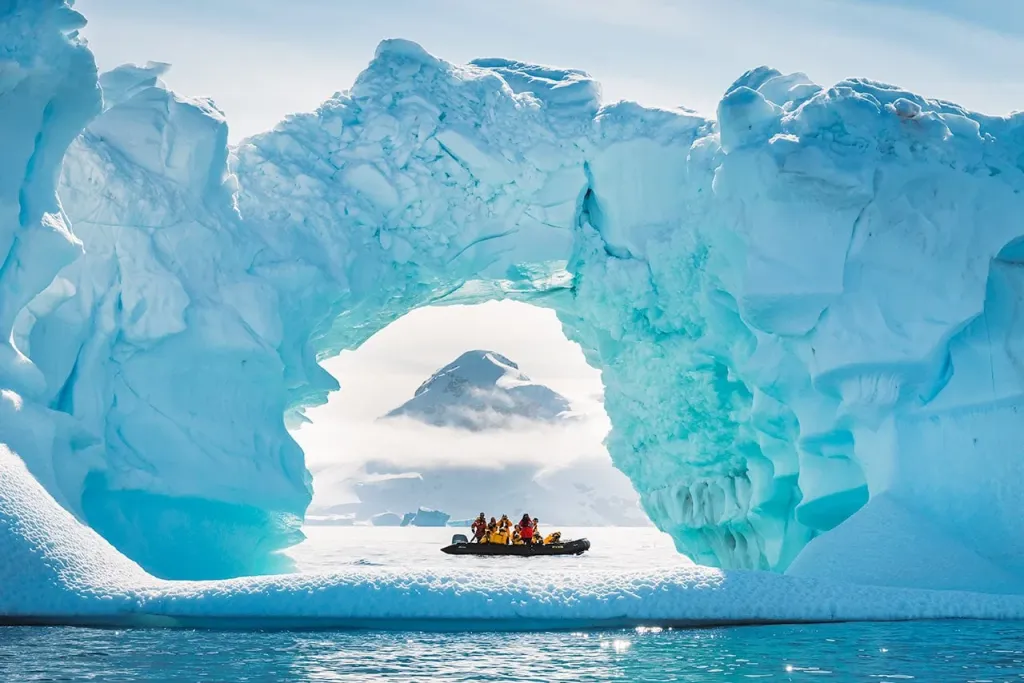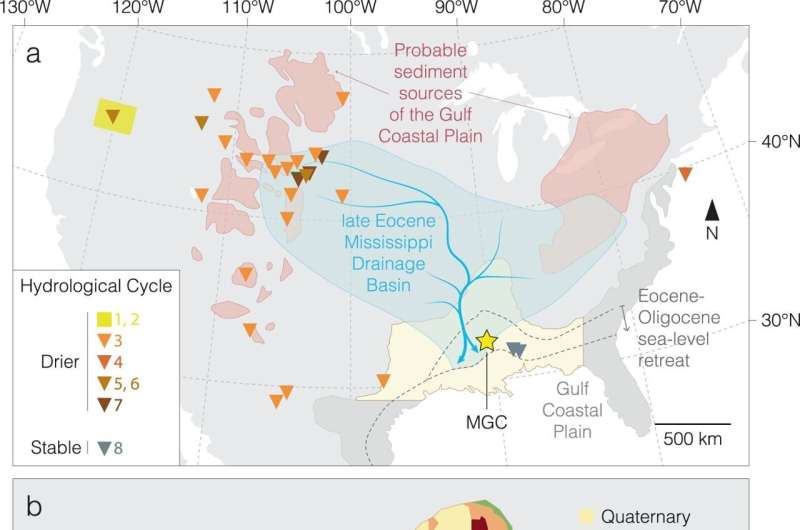Mississippi mud reveals secrets of ancient Antarctic expansion
- August 22, 2023
- 0
Clues to the formation of large ice sheets in Antarctica have been found in mud cores drilled in Mississippi, which teaches an important lesson about a major climate
Clues to the formation of large ice sheets in Antarctica have been found in mud cores drilled in Mississippi, which teaches an important lesson about a major climate

Clues to the formation of large ice sheets in Antarctica have been found in mud cores drilled in Mississippi, which teaches an important lesson about a major climate cooling event sometimes known as the Grande Coupure or Great Cut. In a new article published in the journal Nature CommunicationAn international team of scientists led by the University of Birmingham studied materials from cores drilled near Jackson, Mississippi.
The material found in the core layers suggests a massive transfer of carbon into the atmosphere from plant remains in coastal environments, caused by a drop in sea level of about 40 meters during the formation of the Antarctic ice sheets.

While the initial formation of these glaciers and the onset of modern, colder climate over the last 34 million years was due to the long-term burial or retention of carbon in sedimentary deposits; The team found that falling sea levels caused a 300,000-year gap in climate cooling.
Falling seas exposed coastal areas and their soft sediments to intense erosion by rain and rivers. Organic carbon, such as plant material that once bonded to these sediments and the environment (think modern tropical mangrove swamps), was then exposed to airborne oxygen and available for bacteria to eat and turn back into carbon dioxide. to the atmosphere
“We extracted information from the Mississippi silt to answer an important question about how Antarctic ice is massively expanding to a continental scale,” said Dr Tom Dunkley Jones of the University of Birmingham, senior author of the paper.
“The transition from the Eocene to the Oligocene is possibly the largest climate cooling event on the planet with a major impact in Earth’s history. As sea levels fall during this transition, we can observe that atmospheric cooling is temporarily inhibited by releasing large amounts of carbon dioxide absorbed in coastal areas around the Mississippi River basin.”
“This solves the timescale puzzle of the transition and shows that the onset of this event and the formation of the Antarctic ice sheets began about 300,000 years ago and has continued to shift to a colder state for the last 34 million years.”
The research team examined samples of sea clay at a depth of about 137m and compared them with other important records of this event, particularly from the Central Pacific. The team was able to use data from the new samples to fill in gaps in the geological record, showing how the sediments deposited in the area changed over time, providing a more precise timing of sea level decline that signals the formation of ice sheets.
Dr Kirsty Edgar from the University of Birmingham said: “Our paper gives us a valuable new clue about how Earth’s climate can change dramatically and how this is often closely linked to the biosphere and the carbon cycle.” “Understanding these past events gives us a clearer picture of the beauty and complexity of Earth’s climate and ecology.” Source
Source: Port Altele
As an experienced journalist and author, Mary has been reporting on the latest news and trends for over 5 years. With a passion for uncovering the stories behind the headlines, Mary has earned a reputation as a trusted voice in the world of journalism. Her writing style is insightful, engaging and thought-provoking, as she takes a deep dive into the most pressing issues of our time.